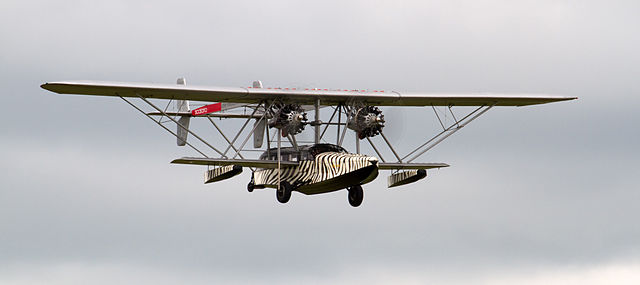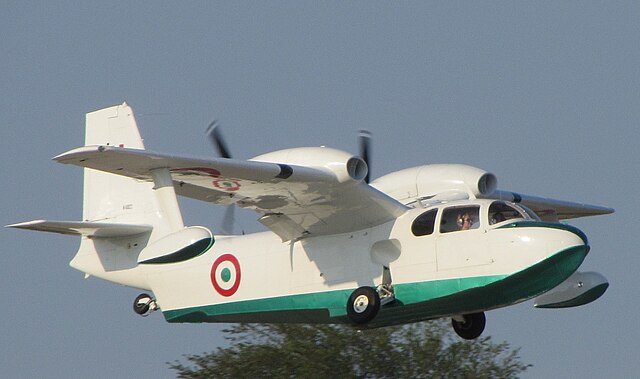The Grumman J2F Duck is an American single-engine amphibious biplane. It was used by each major branch of the U.S. armed forces from the mid-1930s until just after World War II, primarily for utility and air-sea rescue duties. It was also used by the Argentine Navy, who took delivery of their first example in 1937. After the war, J2F Ducks saw service with independent civilian operators, as well as the armed forces of Colombia and Mexico.
Grumman J2F Duck
J2F-3 at NAS Jacksonville in 1940
J2F-6 painted as an OA-12 at the National Museum of the United States Air Force
Columbia J2F-6 Duck in U.S. Marine Corps markings at the Planes of Fame Museum
An amphibious aircraft or amphibian is an aircraft that can take off and land on both solid ground and water. They are typically fixed-wing, though amphibious helicopters do exist as well. Fixed-wing amphibious aircraft are seaplanes which are equipped with retractable wheels, at the expense of extra weight and complexity, plus diminished range and fuel economy compared to planes designed specifically for land-only or water-only operation. Some amphibians are fitted with reinforced keels which act as skis, allowing them to land on snow or ice with their wheels up.
A Canadair CL-415 amphibian with retractable wheels
Vickers Viking - an early amphibian.
replica of Osa's Ark - a Sikorsky S-38 used to explore Africa in the 1930s.
Italian Air Force Piaggio P.136 during takeoff retracting the wheels that make it an amphibian.








